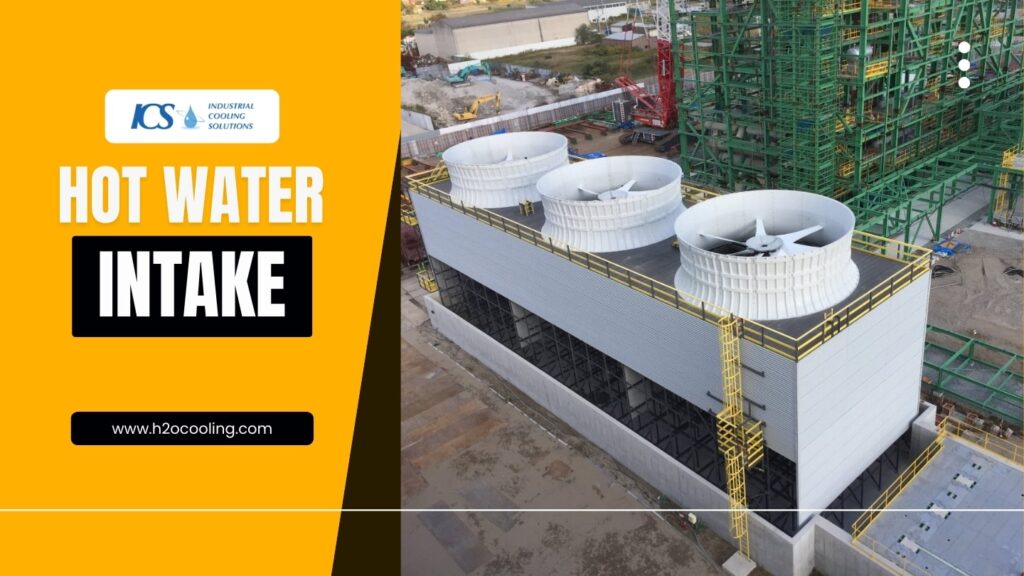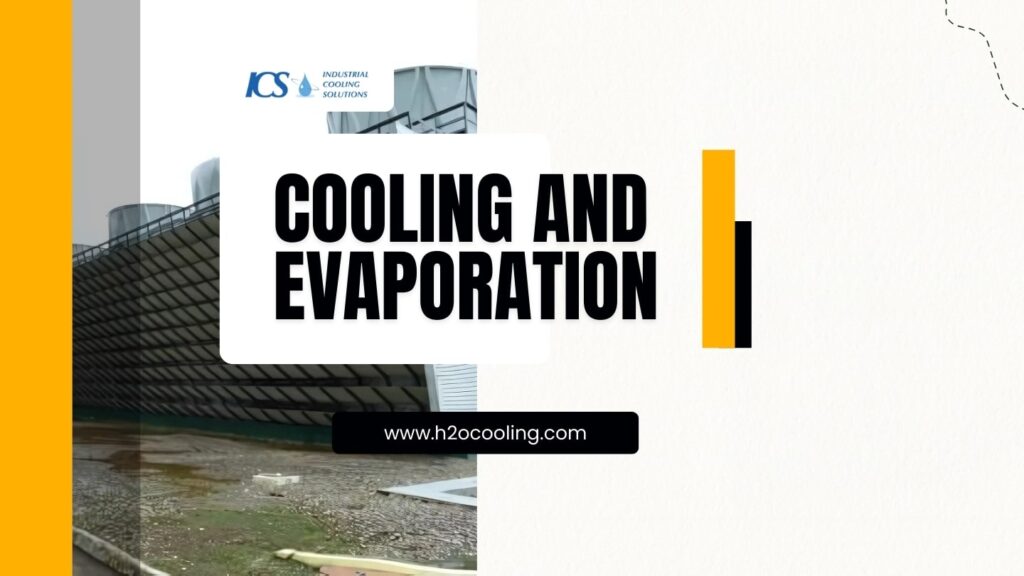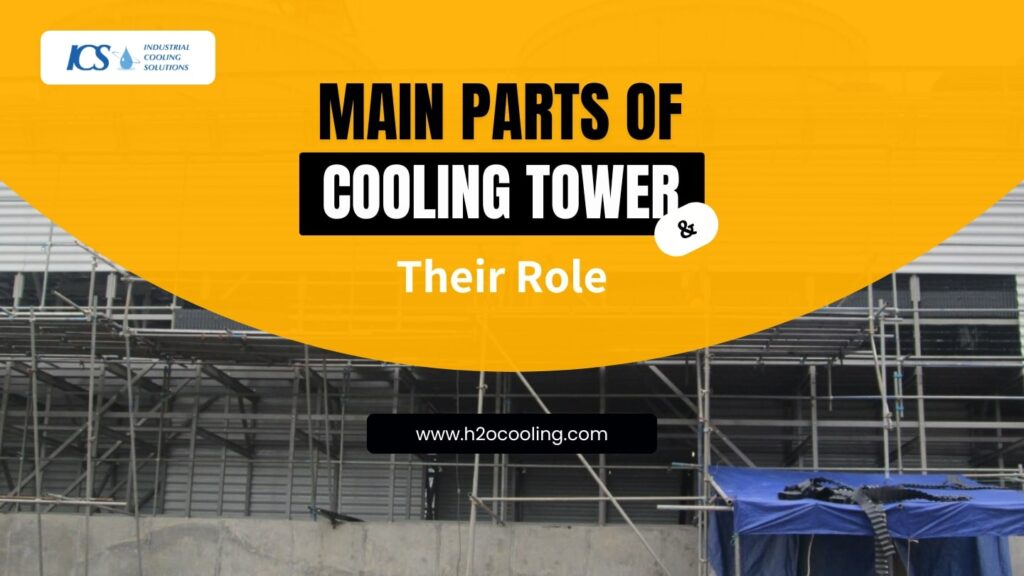Cooling towers are integral to many buildings and industries, such as nuclear power plants and food processing plants, to work effectively at optimal temperatures. With time, many types and designs of cooling towers have been introduced, with modern features to perform maximum in short intervals.
In this detailed blog post, we will discuss how cooling towers work, the best cooling tower type, their essential components and their working methods, and which factors affect the working abilities of cooling towers. To get insight details, stay with us till the end.
Let’s start!
Table of Contents (How Does a Cooling Tower Work?)
How do Cooling Towers work?
There are many cooling tower types, such as mechanical draft cooling towers, natural draft cooling towers, forced draft towers, induced draft cooling towers, field erected towers, crossflow, counterflow, etc., based on their material used, air and water flow direction, and structure.
Here, we will explain step-by-step how traditional large cooling towers work.
Hot Water Intake

The work of cooling towers starts with drawing hot water from industrial processes or industrial equipment for industrial cooling. This hot water, having extra and latent heat, is transferred to the cooling tower and distributed evenly across the top with the help of a water piping system and spray nozzles.
This hot water distribution system effectively spreads the water smoothly on the fill media and ensures maximum air-water contact. This is the first and most crucial step of cooling the tower as if there is no necessary heat exchange during this step, there will be minimum output. By carrying out this step effectively, the cooling tower can cool the enormous volume of water quickly, leading to smooth working.
Heat Transfer by Water Spraying
After successfully distributing the hot water over the fill media, it is time for heat exchange between warm water and cold air. The cooling towers fill are usually made with PVC, plastic, or wood that increases the water surface to promote maximum heat loss from hot water.
As water falls from the spray nozzles in tiny droplets, the extra heat from the water is withdrawn by the air moving inside the cooling tower. That’s the point where evaporation also takes place when water interacts with circulation air; evaporative cooling is necessary for heat transfer, cooling down the warm water and absorbing heat.
Airflow
After the heat exchanger, we are going to discuss the airflow and ventilation process. Cooling tower fans or natural draft pushes the air into the cooling tower from the bottoms or sides of the towers. When air moves across or upward the fill, it removes the excess heat from the hot water and transfers it into cooled water. The warm and moist air moves upward (due to its light weight) and exits from the cooling towers.
Cooling and Evaporation

Cooling towers work on the evaporative cooling principle. During warm water and air interaction, evaporation occurs, and water changes into escapable vapors and exits from the towers. These water vapors absorb large amounts of heat and cool the remaining water. This cooled water is then pushed into the industrial process.
Recirculation
The cooled water gatherers are at the bottom of the cooling tower in the cold tower basin and recirculated into the primary system. This cycle is repeated repeatedly to ensure the industrial process operates in the ideal environment and temperature.
How Crossflow Cooling Towers Work?
The working of crossflow cooling tower systems is also the same as discussed above. The main difference is that water moves vertically by the fill media, and air flows horizontally across the falling water stream. As the water and air crossways each other, it is a crossflow cooling tower.

Air doesn’t have to move through the transmission system because of its crossing flow properties. Because of that, there is a continuous flow of hot water streaming on the fill media by the gravity or disposal containers. The standard pattern of crossflow cooling towers is disposal containers.
Apart from this, the other working principle is the same as that of the cooling tower types. They are larger in size and easy to maintain and access cooling tower components, and the noise level is also low due to the horizontal airflow.
Counterflow Cooling Tower System Working

In counterflow cooling towers, airflow is usually vertically upward due to a water stream in fill media; on the other hand, water flows downward. Fans are generally placed at the top to pull the air upward. As in counterflow cooling tower airflows vertically, there is no need for the containers’s gravity to continue the essential operations.
Instead of the container’s gravity, a pressurized spraying technique or air conditioning condensers are used to diffuse the water droplets into the fill media. They are relatively small compared to the crossflow cooling tower, and due to their complex design, it is difficult to maintain and access its components.
Induced Draft Cooling Towers Working
In an induced draft cooling tower system, a fan is placed at the top of the tower that pulls air up into the cooling tower system and creates a strong updraft. The cooling tower fan induces hot and moist air and is drawn out of the tower.
Draft cooling towers or drawn-through towers give a high level of exiting air and a low level of entering air facilities, minimizing the possibility of circulation, in which released air returns to the air intake.
In the end, cold water gathered at the base of the cooling tower in a cold water basin and again recirculated back into the central system for reuse. Apart from these minor differences, the remaining functions are the same as those of the traditional cooling system. Forced and natural draft cooling towers also work on the same principles except for minor changes.
Main Parts of Cooling Towers and Their Role
An efficient and working cooling tower system has several structural, electrical, and mechanical components and parts that take part in the whole working process of power plants or evaporative cooling towers. Here, we are going to explain the most critical cooling tower components and their roles:

Drift Eliminators: They reduce the water loss due to drift and prevent the water droplets from escaping to the air. They are accommodating in water conservation, prevent excessive water loss, and prevent the surrounding area from damaging or corrosion. They are kept next to the fill media and are typically made from polyvinyl chloride (PVC).
Spray Nozzles: Spray nozzles are used for uniform and even water distribution, such as tiny droplets on the fill media as thin sheets. It is a vital cooling tower component as they carry out the heat exchange process. Spray nozzles can made from different materials, such as PVC or ABS.
Cooling Tower Fan Motors: It is better to call fan motors the ultimate powerhouse of the cooling towers, primarily used to create airflow by rotating the sharp fan blades to draw air outside the cooling towers. A cooling tower fan is used in forced circulation systems, dragging the cool air from the filters and forcing them to move upward. Belts or pulleys are also used in some cooling towers for airflow instead of gearboxes. Their speed is adjustable.
Casing: The outer protective shell holds and protects all the essential parts and components of cooling towers. Its primary purpose is to protect the internal working and delicate components from harsh environments and their effects.
Fill Media: It is also a critical component of the cooling tower as it increases the heat transfer between air and water. As water from the spray nozzles fell over the fill media, spread evenly to ensure contact with water and air for effective heat transfer. They allow the cold air to carry all the extra heat and moisture away by evaporation. The fills are also known as wet decks. Two main types of fill media, splash and film fill, can be used according to the requirements.
Water Distribution System: The network of water pipes and spray nozzles effectively distributes the tiny water droplets over the fill media.
Louvres: Louvres are one of the most critical components as they control the entry of debris, dust particles, and sunlight into the cooling tower system. They also control the air intake, which is crucial for the efficient working of cooling towers.
Factors Affecting Cooling Tower Efficiency
After thoroughly explaining the essential components and their roles in the efficient working of power plants, it is time to discuss the common factors that can affect the maximum output of cooling towers. As they are constantly exposed to harsh environments such as hot or cold weather and bacteria, it is customary to lose their efficiency with time. To overcome any critical issue, it is suggested that regular upkeep and repair of the cooling tower systems be done for maximum and timely output.
Here are some of the most common factors that can directly affect the cooling tower’s working capacity.
Air Flow Rate: It is directly responsible for heat exchange; proper airflow leads to the popper cooling and effective release of unwanted and extra heat from power plants. On the other hand, if there is no adequate airflow mechanism inside the cooling tower, there will be insufficient cooling and increased power consumption. Excessive (more than required) and continuous flow can result from water loss by drifting. Check the airflow rate thoroughly to keep it in moderation.
Water Flow Rate: Like air flow rate, water flow rate is also an essential factor for a cooling system to work properly and reduce water consumption, and an insufficient water rate directly affects the heat exchange rate and industrial cooling.
Water Quality: Poor quality water can cause corrosion, scaling, or microbial growth inside the tower in no time. Mineral and biological impurities can clog the fill media and reduce the surface for air-water contact, which ultimately decreases the cooling capacity of the cooling tower system. Poor water can also damage or clog the tiny spray nozzles. As a result, there will be no water distribution in the water stream. To avoid all these problems and maintain cooling efficiency, check the hardness, pH (6.5-7.75), and impurities before using it. Water treatment chemicals are used for water purification.
Regular Checking: Regular checking and maintenance of the thermal power plants or cooling tower system is essential for optimal performance. Ignoring the small trigger signs, such as strange engine noise, visible leaking, increased energy consumption, or other factors, can cause heavy losses to money and machinery. Weekly, monthly, and quarterly checking and maintenance of the cooling tower is required for maximum working and evaporative cooling.
Fill Media Material and its Conditions: Keep an eye on fill media material and its condition, as it is directly responsible for the cooling process of the tower system and works as a heat exchanger. If there is any damage, clogs, or impurities present on fill media, make proper cooling tower management to remove them, change them, or repair them to avoid further damage or waste heat.
Conclusion
It is concluded that cooling towers are necessary for extracting excess heat from industries or power plants such as petrochemical plants and food processing plants by using an evaporative cooling mechanism. We have discussed different cooling tower types’ step-by-step working processes, essential cooling tower products, and factors affecting the working capacity of cooling towers.
After having comprehensive knowledge about cooling tower types and their working system, it is also required to know about their maintenance and preventive measures to keep them at optimal conditions to avoid unnecessary delay in their heat-absorbed system.

